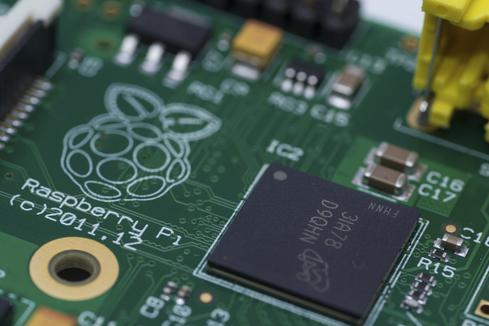Lenovo Ideacentre Stick: The $129 PC In Your HandLenovo Ideacentre Stick: The $129 PC In Your Hand
Lenovo's pocket-size $129 Ideacentre Stick 300 joins a growing field of computer-on-a-stick offerings from rivals like Google and Intel.


10 Raspberry Pi Projects For Learning IoT
10 Raspberry Pi Projects For Learning IoT (Click image for larger view and slideshow.)
Lenovo is rolling out the company's first compute stick -- the Ideacentre Stick 300. For $129 it transforms almost any HDMI-compatible TV or monitor into a Windows-based PC.
The device boasts an Intel Baytrial Atom Processor Z3735F, 2GB of memory, and 32GB of storage. It initially ships with Windows 8.1, but will be eligible for a free upgrade to Windows 10 starting July 29.
All this is packed into a case measuring just 3.94" wide, 1.5" deep, and .59" high.
Other features of the Ideacentre Stick include WiFi and Bluetooth 4.0 connectivity. It can also be turned into a fully functioning PC when an optional 2.4GHz wireless keyboard and mouse are added.
The Ideacentre Stick 300 is currently available on Lenovo's website and hits retail stores in July.
Lenovo, along with other PC makers, are watching traditional desktop fall as more and more people turn to mobile devices, especially smartphones and laptops, for their computing needs. The onslaught of these PC sticks is a way to reinvigorate an older form factor.
The release of Lenovo's PC-on-a-stick device follows Intel's launch of the Compute Stick, its version of a pocket PC that resembles a USB stick in size and weight. That item features a 64-bit quad-core Intel Atom processor with 2GB of RAM and offers two levels of storage capacity, 32GB and 64GB.
The Intel PC stick running on Ubuntu Linux costs $89. The Windows 8.1 variant retails for $150.
Other PC-on-a-stick competitors include the Google Chromebit, which also has the dimensions of an oversized USB thumb drive; the Raspberry Pi, a family of credit card-sized single-board computers that can run Windows or Linux; and the MeeGo Pad T01, launched in late 2014, which sports nearly the exact same specifications as the Compute Stick.
In addition to other features, Lenovo's Ideacentre Stick comes preloaded with software that includes a three-month trial of Microsoft Office 365. It includes an SD card reader, a Micro USB 2.0 port, and a speaker.
While it's not intended to be used as a full-blown personal computer, or one that can easily fit within an enterprise, the device could find favor with consumers looking for a PC that can fit almost anywhere and turn anything with an HDMI port into a bare-bones computer.
[Read about whether Windows 10 will be free or not.]
"We've looked at the computing needs of travelers, business people and families, and realized that a truly portable and affordable solution would be a significant benefit to users of all kinds," Jun Ouyang, Lenovo's vice president and general manager of worldwide desktop and visuals, wrote in a June 22 statement. "Our goal with the Ideacentre Stick 300 is to give those users a sense of freedom and enhanced mobility, while packing a serious punch in a small device."
While all the devices mentioned can be picked up by American consumers, they might not be the target market. Vineet Durani, Microsoft India's director for Windows Business Group, told the Economic Times of India that a stick might help improve penetration into emerging markets, where just 10% of households in the country currently have access to computers.
"We can position this stick PC as a cheap alternative to PC. In those areas, chances are that people might not have a PC but they certainly have a TV in their house," Durani told the paper.
About the Author
You May Also Like






